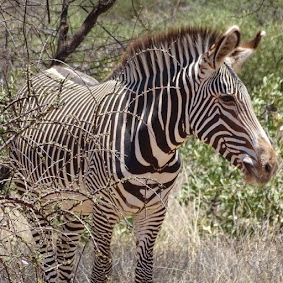Then again, while running for office, you also said you’d end bear hunts – but that proved impossible to do, either promptly or completely.
So here we are as your re-election campaign gets underway, still wondering what your word is worth. And also wondering how many of those 286 dead bears were innocent, vulnerable cubs. How many were moms, needed by cubs? And how many bears were lured into range because they were baited – attracted by easy food left out just for them?
Killing cubs and baiting bears are unsportsmanlike, inhumane practices permitted in very few other places; leave it to NJ to permit both of them. But when we have bear hunts here, we pull out all the stops. So for instance, numerous out-of-staters were allowed to travel here for the trophy hunt -- in the midst of a worldwide pandemic – jeopardizing NJ residents with a killer virus on top of the perils inherent in archery and muzzle loading rifles.
Way to go, Gov. Murphy! A well-meaning letter writer from Connecticut urged in Monday's Times of Trenton “New Jersey opponents should make their voices heard and demand that bear hunting end in their state.” She’s obviously unaware of years of such protests, with marches, demonstrations, billboards, letters and phone calls (etc., etc.), with establishment of a statewide coalition against the hunt and with proposed rule changes that would remove bear hunts from the state’s bear management plan. What does it take?
The other side of this coin was illustrated on Saturday, as the Wildlife Conservation Network (wildnet.com) wound up its 2-day virtual expo. As was the case on Oct. 10, the program consisted of scientists and other experts, including local people committed to the animals featured, reporting to participants and donors about the progress of their work.
Once again, I “attended” as many sessions as possible: Yellowstone wolves; elephants, Grevy’s zebras, pangolins. Each session ran for about an hour, with Q&A periods afterwards.
In all cases, those involved in the presentation spoke from wherever in the world they’re stationed, often with subtitles, and yes, the technology made all that look easy. As one African leader described his work with elephants, they moved around in a savanna area behind him. Wearing beautiful beaded collars, village women explained their unique contributions to animal welfare. A young man who began as an intern told us how he gained knowledge and greater responsibility; post pandemic, he will leave for Ph.D studies.
 |
| Grevy's Zebra |
I consistently heard and witnessed how Westerners made team-members and partners of the people living in areas with threatened animal species. “More conservation that’s Africa-led, for Africans,” was how one speaker put it.
Ideally, progress comes through changing hearts and minds, rather than law enforcement. That’s why, as his motivations and needs were considered, one pangolin poacher became a pangolin protector. Local people often join animal-guard corps in forests and sanctuaries, or work with automated tracking systems for animal movement all over the continent.
Why should we care about all this, one speaker asked, then answered: “because the future is going to become coexistence.” Eating wildlife, including pangolins, is thought to be behind Covid-19, and commercial wildlife trafficking must end!
That conclusion leads to a New Yorker article about pangolins that will sadden you while informing you about the origins of the coronavirus via wild animal consumption. Its print title, “The Sobbing Pangolin,” sets the tone much better than the online title.




No comments:
Post a Comment